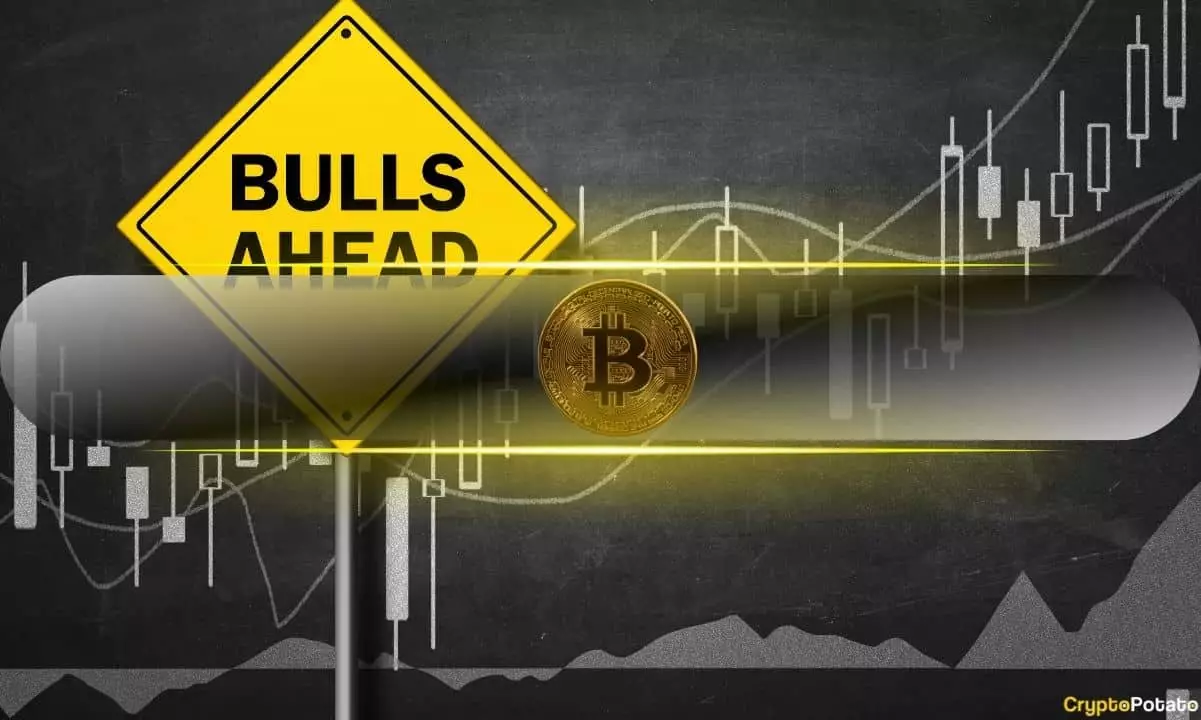In recent weeks, Bitcoin (BTC) staged a dramatic comeback, ascending over 25% from its April 9 slump. Touching just under $74,000, Bitcoin’s price has surpassed the significant $96,500 mark as of early May. This shift isn’t merely a matter of speculative trading; it indicates substantial underlying economic principles at play that are transforming the cryptocurrency landscape. What makes this moment pivotal is not just the price increase but the accompanying metrics, which could signal a sustainable trend rather than a short-lived spike.
The shift in Bitcoin’s value can be closely linked to a myriad of factors, primarily revolving around decreasing volatility and a diminished supply of BTC available on exchanges. As experienced traders well know, a reduction in available coins often leads to price escalations when demand remains constant or rises. However, it is Bitcoin’s miner economics—specifically the relationship between production costs and market value—that has caught the attention of analysts like Robert Breedlove. His insights suggest that the average miner’s cost of production is a pivotal indicator of market stability.
Understanding Miner Economics
Breedlove highlights a compelling pattern linked to production costs that have historically aligned with price bottoms in the Bitcoin market. Examining data over the years, it becomes evident that Bitcoin tends not to trade below production costs in a rational market environment. As unprofitable miners exit, there is a resultant decrease in supply, thereby creating upward pressure on prices. With a current market breakeven line signaling potential new lows, the prevailing conditions seem to align perfectly for a renewed bull market.
In a landscape where speculation can often cloud judgment, a focus on miner metrics grounds the analysis in tangible economic principles. It serves to illustrate how actual operations—mining, selling, and trading—create a feedback loop that ultimately influences market trends. If Bitcoin continues to exhibit signs of encouraging behavior from miners, it certainly bodes well for long-term price stability and growth.
Long-Term Holders: The Silent Giants
Another significant piece of the bullish puzzle comes from long-term holders—those steadfast investors who resist the temptation to sell during turbulent market conditions. Over a 30-day period, these committed individuals have accumulated an additional 150,000 BTC, creating conditions ripe for a potential supply shock. Such behavior exemplifies a growing belief in Bitcoin’s long-term value, which can only serve to bolster prices in the face of a dwindling supply.
The activities of whales—individuals or entities that possess large BTC holdings—further support this argument. Reports indicate that approximately $4 billion worth of Bitcoin was acquired by these large-scale investors in the latter part of April. This trend signals a reinvigoration among institutional and individual investors alike, prioritizing Bitcoin as a risk asset in light of favorable macroeconomic conditions.
The Bullish Macro Trends
Adding to the positive climate is an increasingly favorable macroeconomic backdrop for cryptocurrencies like Bitcoin. With central banks loosening their monetary controls and increasing global liquidity, the stage is set for significant capital inflows into risk-based investments, including cryptocurrencies. Observers may recall former BitMEX CEO Arthur Hayes’ commentary regarding Bitcoin’s high correlation with fiat currencies. As traditional money supplies expand, it creates a fertile environment for Bitcoin as a viable alternative investment.
Bitcoin is getting easier to access too, with the rise of ETFs and institutional custody solutions. These innovations in financial products erode historical barriers to entry, facilitating more new money entering the cryptocurrency market. The mainstreaming effect that such developments create cannot be understated—the greater accessibility functions to draw both retail and institutional interest alike, pushing Bitcoin further into the limelight as a legitimate asset.
Into the Future: What Lies Ahead?
In light of the current dynamics within the Bitcoin market, it’s clear that we are at a transformative juncture. Prices are not simply recovering; they are being propelled by robust market fundamentals that favor sustainable growth. While skepticism remains a staple of market analysis, those willing to look closely at the changing tide of miner operations, long-term holder behaviors, and macroeconomic influences are likely to find themselves on the winning side of this financial renaissance. For those riding the Bitcoin wave, the horizon may just be brightening.














